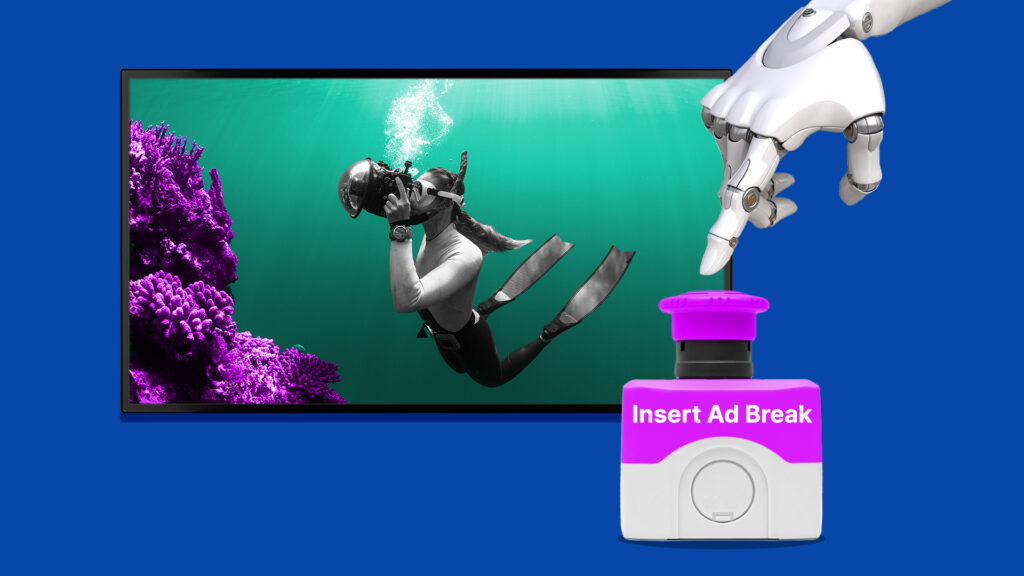From the MNTN Slack: What Netflix’s Q1 Report Signals About the Future of Streaming
by Cat Hausler
8 Min Read
CES 2024: Stagwell (STGW) and MNTN Announce Partnership in Unified Performance SolutionsLearn More
Showrunners bemoaning ads is nothing new, even in the new era of streaming. But could it look different with ad-supported streaming and the right tech stack in their corner?

5 Min Read
“We fought so hard to get rid of commercials,” Alan Poul recently told Hollywood Reporter, in a piece reigniting what is quickly becoming a chicken-and-egg conundrum in TV town. “It was one of the biggest steps in bringing the worlds of TV and film closer together, in getting that higher level of artist to participate. It was such a seminal gain, and now it’s reversing.”
The Tokyo Vice executive producer and director wasn’t the only one decrying ads . Back in the broadcast era, viewers and creatives alike were conditioned to expect content to come with ad breaks. Then the advent of ad-free streaming changed those expectations, and for the better part of the past two decades, many who count themselves as ad-averse have enjoyed a brief respite. But as they say, what’s old is new again — and now that ad-supported streaming has become more the norm than the exception to the rule, some creators are calling foul.
They’ve got a point — nobody wants the big climax scene in their favorite drama suddenly interrupted by a pharmaceutical commercial. But is running ads against streaming TV in itself really the issue? Let’s put this in perspective.
Back in the days of broadcast TV, it was the networks who determined the location in the show where an ad break would occur, usually right up against airtime. This, as one might imagine, was a manual and often time-intensive process.
But ads on streaming platforms are often inserted just as manually — just on vastly different technology, and on an exponentially larger scale. Now, thousands and thousands of shows and films are getting ad support both retroactively (those released ad-free over the past decade) and programmatically (as streamers acquire and format new titles). And with no individual “airtimes” that would allow for a timestamp double-check before a viewer experiences them, the precision of linear TV ads is simply unfeasible. And while the technology is still evolving to meet these needs, it’s not quite at the level where it can autocorrect an often-awkward mix of fade-in/outs and delayed cuts (depending on what network you’re watching). So naturally, some showrunners, especially those making new shows designed assuming an ad-free experience, would be dissatisfied.
“I’d just hope showrunners have a say where the ads are, and that [episodes] don’t just break in the middle,” said Terry Matalas, showrunner for Paramount+ Star Trek: Picard. Lulu Wang, filmmaker and creator of Amazon Prime’s Expats, vented her frustration about how not knowing where ad breaks would be placed ruined the flow of her show. “If I had known, I would’ve created [it] in a different way because it’s not a show that has cliff-hangers or commercial breaks to make sure people come back.”
Is this wishful thinking, or will ad-supported streaming TV eventually evolve to a point where each party gets their just desserts? Either way, creators will need to readjust to the ad format of the past and write and cut content with some “breathing room” for commercial breaks. Because for viewers, ads are a fact of life. 80% of US adults choose streaming as their first source for viewing content, while 62% of viewers prefer free, ad-supported streaming over a paid subscription. While some viewers will always find an ad-free experience worth the climbing price tag, the overwhelming majority will choose an ad-supported deal.
At the end of the day, everyone wants a smooth and non-disruptive streaming experience. Show creators don’t want their art to suffer anymore than advertisers want their ads to clash with, much less spoil, the content they’re served on. And networks? Well, they’re answering to Wall Street and their audiences, so it’s in their best interest to improve the ad-supported model until it plays just as smoothly as linear.
All parties benefit in the long run as ad-supported streaming continues to evolve, and with a 39% increase of content titles over the past two years, it only means more exposure for creators, and more opportunities for advertisers, and a multiplier effect for everyone. 100% ad-free content may soon be a thing of the past in any case — Netflix’s ad-free plans don’t include commercial breaks in on-demand titles, for example, but they may serve “limited commercial content like branded content or sponsorship messaging.” In the case of other networks, we might eventually see more paywalls come into play at a premium. Time (and quarterly earnings reports) will tell whether these will be baked into already increasing subscription fees or not.
As the pendulum continues to swing between creators, networks, and advertisers, it’s a matter of reinventing the traditional model from the days of linear, for a new era of TV. Our bet is that eventually this ad experience will surmount what we were once used to, thanks to technology and TV viewership trends. And maybe in the future, the pendulum will reach a state of equilibrium.